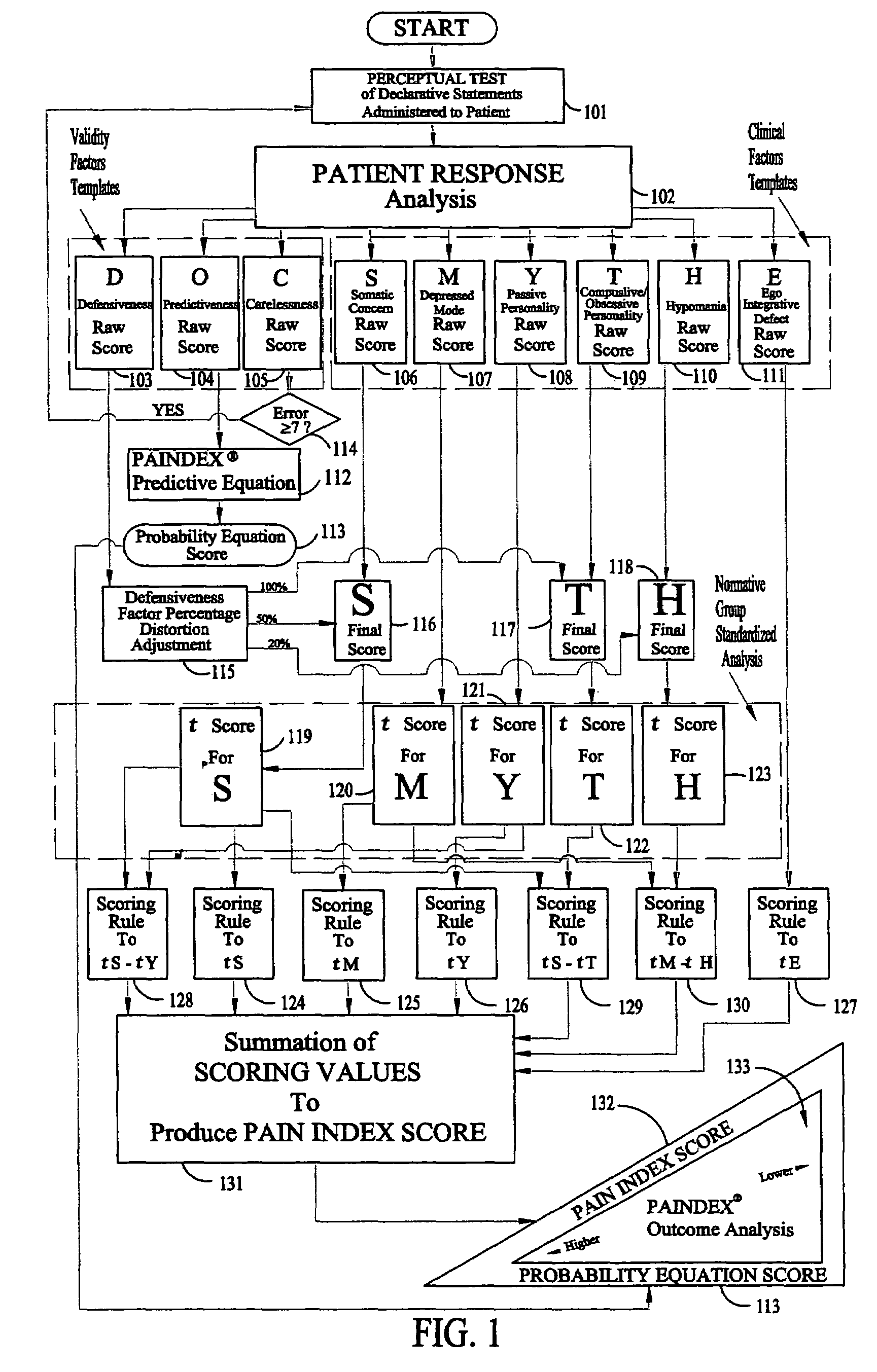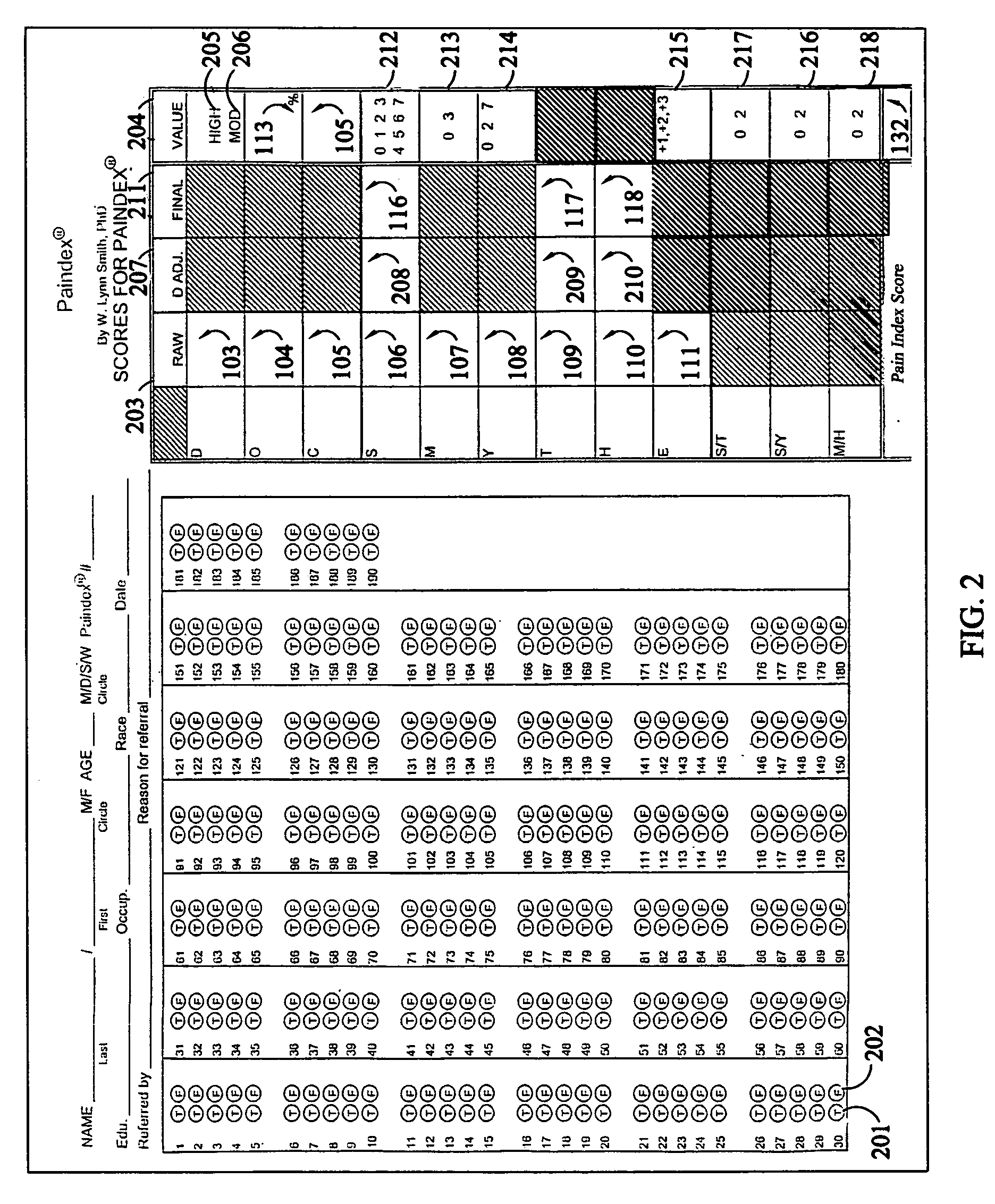Method for diagnosis of pain relief probability through medical treatment
- Summary
- Abstract
- Description
- Claims
- Application Information
AI Technical Summary
Benefits of technology
Problems solved by technology
Method used
Image
Examples
Embodiment Construction
[0034]The present invention pertains to a method of diagnosing patients, with chronic pain, having somatization, in order to assess a probability of relief of such pain through medical or surgical treatment, by administering to a patient a self-reporting diagnostic test that identifies and quantifies a plurality of psychological and behavioral, clinical factors. Such clinical factors may affect treatment outcome for a patient sensitive to somatization, and have a bearing on a decision by a physician to operate or otherwise medically treat a patient, and on predicting whether problems could occur post-operatively or after treatment. Accordingly, the present invention method is a diagnostic assessment of the mind-body interface, thereby testing the perception to pain, and analyzing the impact of somatization, that may be utilized by surgeons to objectively assess clinical (psychological and behavioral) factors that might have a bearing on the decision to operate or medically treat a p...
PUM
 Login to View More
Login to View More Abstract
Description
Claims
Application Information
 Login to View More
Login to View More - R&D
- Intellectual Property
- Life Sciences
- Materials
- Tech Scout
- Unparalleled Data Quality
- Higher Quality Content
- 60% Fewer Hallucinations
Browse by: Latest US Patents, China's latest patents, Technical Efficacy Thesaurus, Application Domain, Technology Topic, Popular Technical Reports.
© 2025 PatSnap. All rights reserved.Legal|Privacy policy|Modern Slavery Act Transparency Statement|Sitemap|About US| Contact US: help@patsnap.com



